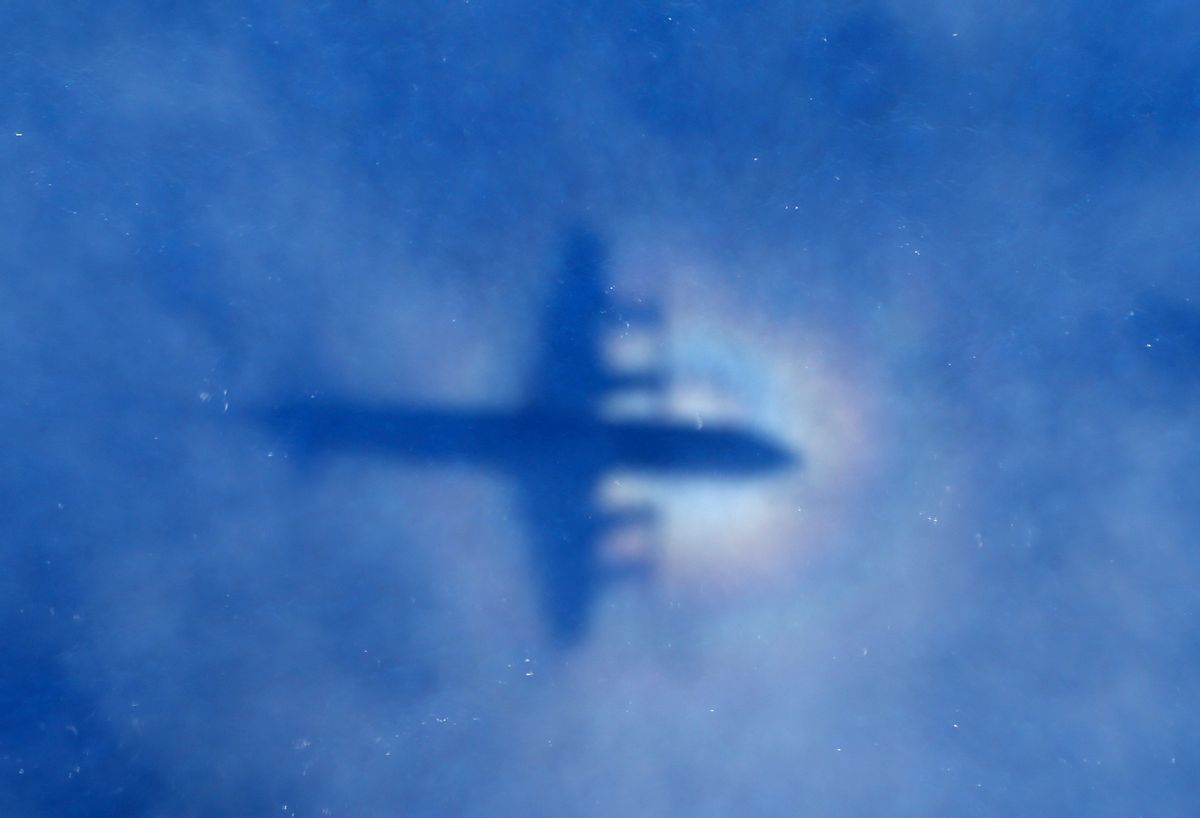On Thursday an Australian Air Force jet scouring the Indian Ocean detected what may have been a fifth "ping" from a man-made device. Search teams have yet to confirm the signal. “The acoustic data will require further analysis overnight but shows potential of being from a man-made source,” said retired Air Chief Marshal Angus Houston. If confirmed, the signal could help narrow the search area for Malaysia Airlines Flight MH370, which investigators say "ended" in the Indian Ocean a month ago.
The ping was detected by an Orion P-3 aircraft. The Australian Air Force has been dropping sonar buoys in the area where Australian ship Ocean Shield detected two "pings" on Tuesday. According to CBC News, each buoy has a hydrophone listening device dangling about 980 feet below the surface.
Along with a U.S. Navy black box detector, being towed by Ocean Shield, the buoys are being used to help search for the missing plane's black box. The Boeing 777's black box was equipped with two recorders -- one for data and one for voices. Each recorder has a beacon that goes off once it makes contact with water. Investigators are saying that the first two signals picked up by Ocean Shield over the weekend are consistent with black box signals.
Finding the black box is crucial for several reasons. With no physical evidence from the crash, the signals could lead search teams to the wreckage. Also if the black box is recovered, it can give investigators clues as to why the flight veered dramatically off course and crashed into the ocean.
Unfortunately, time is not on the side of the joint search team. The black box's beacons only have a battery life of 30 days, though according to CBC News, searchers could possibly pick up fading signals for 10 more days. Though the Ocean Shield's search area has been narrowed to roughly the size of Los Angeles, investigators are hoping to narrow the area even further before they send down an unmanned submarine.
The Ocean Shield, towing the U.S, Navy "ping" detector, can cover more ground faster. According to CBC News, "The Bluefin 21 sub takes six times longer to cover the same area as the pinger locator, and it would take the vehicle about six weeks to two months to canvass the underwater search zone."
The search for floating debris is also underway. The Joint Agency Coordination Center reports that 10 military aircraft and four civilian planes, along with 13 ships, took part in the day's search for Malaysia Airlines Flight MH370. The plane, carrying 239 people, went missing under still-unknown circumstances on March 8.

Shares